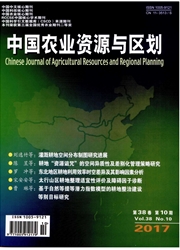

 中文摘要:
中文摘要:
西藏作为世界生态旅游目的地之一,拥有高原特色的自然生态旅游资源和人文生态旅游资源。大香格里拉生态旅游区的建设,使得生态旅游业已成为推动西藏跨越式发展的支柱产业之一。不同的生态旅游目的地,在生态旅游资源禀赋和生态旅游开展的环境在空间分布上具有一定的差异性。为了更客观地反映这种差异性,采取自上而下的方法,根据西藏生态功能区划和主体功能区划的方案,兼顾行政区划与生态系统协调性原则、遵循资源同质性原则、生态功能区划原则和注重生态文化性原则,对西藏的生态旅游资源进行了梳理和分类,采用四级区划分类单位系统,将西藏生态旅游目的地划分为3个生态旅游大区,即藏东南生态旅游大区、藏西北生态旅游大区、藏中南生态旅游大区;7个生态旅游区,即怒江源高原亚寒带半湿润高寒草甸生态旅游区、拉萨河流域文化生态旅游区、羌塘高原亚寒带半干旱草原生态区、阿里高原温带干旱荒漠生态区、藏东南山地热带雨林、季雨林生态旅游区、藏东高山深谷温带半湿润常绿阔叶林—暗针叶林生态旅游区、藏南山原宽谷温带半干旱灌丛草甸生态旅游区21个生态旅游地,若干生态旅游景区,并对各个生态旅游区进行了概述,为提升西藏生态旅游旅游发展和管理水平,促进生态旅游与文化、生态融合发展,实现西藏世界生态旅游目的地建设目标和生态旅游的可持续发展奠定基础。
 英文摘要:
英文摘要:
Tibet as one of eco-tourism destination in the world has plateau characteristics of natural ecotourism resources in ecological tourism resources and culture. Eco-tourism has become one of the pillar industries to promote leap-forward development of Tibet. Eco-tourism resources and environment have some differences in the spatial distribution among different ecotourism destinations. In order to reflect the differences objectively,following the principles of administrative regionalization and ecological system coordination,homogeneity,ecotourism regionalization and ecological culture,this paper divided Tibet into 3 eco-tourism areas,7 eco-tourism sub-areas,21 eco-tourism destinations,based on the main function regionalization. 3 eco-tourism areasincludedeco-tourism zone in Southeast Tibet,eco-tourism zone in Northwest Tibet,eco-tourism zone in South Central Tibet. 7 eco-tourism sub-areas included the Original Valley Lake reservoir Nanshan shrub meadows in temperate semi-arid ecological tourism zone,Lhasa River Valley culture eco-tourism area,Subarctic semi-arid grasslands of the Qiangtang plateau area,Ali temperate arid desert plateau ecoregion,Southeast mountain rainforest-rainforest eco-tourism area,Tibet high mountains and deep valleys-temperate semi-humid Evergreen broad-leaved forest in dark coniferous forest ecological tourism zone,Subarctic semi-humid in alpine meadows of the Nu River plateau ecological tourist.The results can enhance the ecotourism development and management level,and promote the development of ecology,ecological tourism and culture in Tibet.
 同期刊论文项目
同期刊论文项目
 同项目期刊论文
同项目期刊论文
 期刊信息
期刊信息
